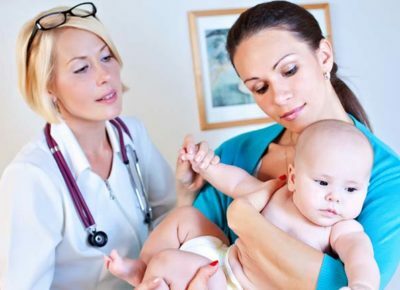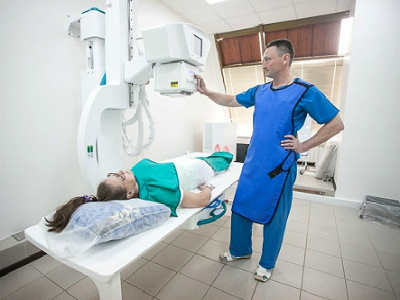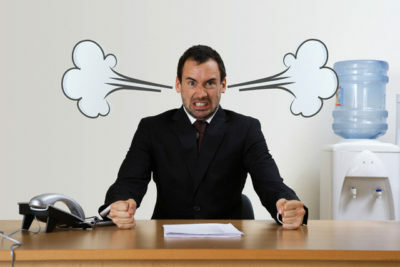1 Variety of the disease
The attack is of mild to severe severity. In the first case, only the gland itself suffers. There is swelling in the body. Such an attack almost always ends up safely. Risk for life is absent. In severe attacks, necrosis of the organ tissues or damage to other internal organs is possible. This occurs as a result of intensive production of enzymes. With a severe attack, it is possible to accumulate fluid in the tissues of the gland. Often, in the absence of medical measures, an infection joins. Developed purulent inflammation, which may require surgical intervention. In severe attacks, false cysts can form. This happens a few weeks after the attack.

Recommended to read
- Nutrition after operation for appendicitis
- What to do if the pancreas hurts
- What can I eat with a pancreatic patient
- Effective agent for gastritis and stomach ulcer
2 Features of the course of
Pancreatitis is a disease of predominantly noninfectious nature, in which the pancreas is inflamed. Against the background of the influence of various triggering factors, active development of enzymes takes place. Against this background, the digestive juice begins to digest its own organ tissues. With prolonged course of the disease, necrosis of individual sections of the gland is possible. Such a body is not able to function normally.
Pancreatitis can occur in acute and chronic forms. Acute inflammatory process often occurs against the background of a large intake of alcohol or fatty foods. Acute pancreatitis in most cases develops in individuals aged 30 to 60 years. In recent years, the incidence rate has increased several times.
Acute pancreatitis can be primary and secondary. Secondary inflammation is caused by other diseases of the digestive tract( cholelithiasis).The chronic form of inflammation occurs with periodic attacks. Between attacks, patients can feel satisfactory. Inflammation of the pancreas is dangerous for its possible complications. These include inflammation of the peritoneum, multi-organ failure, shock, the formation of abscesses, accumulation of fluid in the abdominal cavity.
-
 IMPORTANT TO KNOW! Gastritis? Ulcer? To have a stomach ulcer not turned into cancer, drink a glass. ..Read the article & gt; & gt;
IMPORTANT TO KNOW! Gastritis? Ulcer? To have a stomach ulcer not turned into cancer, drink a glass. ..Read the article & gt; & gt;

3 Causes of
In acute pancreatitis, the causes are diverse. Almost every second attack occurs against the background of drinking alcohol. The most pronounced toxic effect on the gland is provided by beer and surrogates of alcohol. Other possible causes of this pathology include the following:
- the presence of cholelithiasis;
- peptic ulcer disease;
- gastroduodenitis;
- is an inflammation of the liver;
- irrational food;
- conducting operations;
- weighed down with heredity.
There are a number of predisposing factors. These include taking certain medications( cytostatics, sulfonamides), alimentary obesity, smoking, infection with the hepatitis B virus, the presence of mumps, cystic fibrosis, endocrine disorders. The state of the pancreas directly depends on the nature of human nutrition.
Individuals who prefer to eat in boiled or stewed form have less risk of developing pancreatitis. Abuse of fried foods, spices, overeating - all these are the factors of the appearance of an attack of pancreatitis. Very often an attack occurs on holidays. It contributes to this high load on the organ.

4 Pain sensation
Symptoms of pancreatitis are different. The most pronounced symptoms are with an acute attack. In the presence of pancreatitis, the symptoms include abdominal pain, nausea, vomiting, malaise, bloating, fever. The main sign of the attack is pain syndrome. Pain in acute pancreatitis or exacerbation of chronic has the following features:
-
 Gastroenterologist. IMPORTANT: "I beg, if you began to worry about abdominal pain, heartburn, nausea, do not do gas. .."Read more & gt; & gt;
Gastroenterologist. IMPORTANT: "I beg, if you began to worry about abdominal pain, heartburn, nausea, do not do gas. .."Read more & gt; & gt;
- is felt in the epigastric region or the left hypochondrium;
- may be shingles;
- intensive;
- occurs suddenly;
- lasts from a few minutes to several days;
- is permanent;
- can be combined with nausea and vomiting;
- is due to damage to the cells of the gland or their death.
Less often the pain is felt in the right hypochondrium. The localization of the pain syndrome depends on which part of the body is inflamed. The pain is difficult to remove. Against the background of taking pain medications, she can disturb a person for several more hours.
Pain can be irradiated to the scapula, shoulder or back. An important diagnostic sign of pain in an attack of pancreatitis is that it intensifies when a person lies on his back. Promotes the intensification of pain syndrome, the use of fatty, fried, smoked, spicy food.
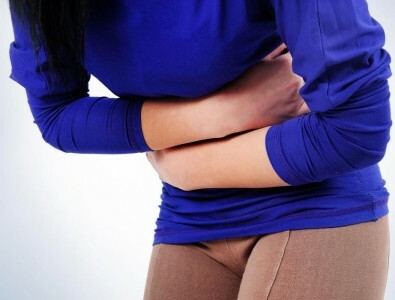
5 Clinical picture of
When an attack of the pancreas worsens the general condition. Often the body temperature rises. It is the highest with purulent inflammation. The temperature can reach 38 ° C or more. Some patients experience chills and heart rate. Breathing becomes more frequent. The appearance of a person changes: the skin becomes pale, sweat appears on the forehead. In some cases, yellow eye sclera is observed. With inflammation of the pancreas, the symptoms often include the appearance of cyanotic spots on the body of a sick person. The main cause is a violation of microcirculation.
TIP FROM THE MAIN GASTROENTEROLOGIST
Korotov SV: "I can recommend only one remedy for the rapid treatment of Ulcer and Gastritis, which is now recommended by the Ministry of Health. .." Read the reviews & gt; & gt;
Difficulty in removing enzymes in the lumen of the intestine leads to a decrease in appetite. A sick person has an aversion to food. Very frequent manifestations of an attack of pancreatitis are nausea and vomiting. They occur after eating. Vomiting can be single or multiple. After it, the patient does not get better. Vomiting can be acidic contents of the stomach or bile. In the latter case, a bitter taste appears in the mouth.
Frequent vomiting can lead to dehydration. In this situation, the development of collapse( lowering blood pressure) and hypovolemic shock is possible. A frequent sign of the disease is bloating( flatulence).Often broken stool. It becomes liquid or mushy with slices of undigested food. Cal is fetid and contains a large amount of fatty particles.
6 Diagnostic measures
An attack of pancreatitis can be confused with other diseases of the digestive tract( cholecystitis, colitis, peptic ulcer, appendicitis, exacerbation of gastritis).To make the correct diagnosis, you need to examine the patient. Diagnosis includes:
- patient interview;
- belly palpation;
- determination of heart rate, respiration rate, pressure;
- listening to the heart and lungs;
- carrying out ultrasound of the pancreas and other organs of the abdominal cavity;
- computer or magnetic resonance imaging;
- carrying out biochemical tests;
- general and biochemical blood tests;
- urine analysis;
- ;
- angiography;
- study of feces.
Of great value is the determination of the concentration in the blood and urine of amylase. With the development of an attack of pancreatitis, its level rises sharply. The content of phospholipase A2 in the blood is also determined. If a bilirubin, transaminase, and phosphatase increase was detected during the laboratory test, this may indicate a violation of bile outflow.
ultrasound and computed tomography allow you to assess the condition of the organ. FGDS allows excluding the pathology of the stomach. An attack can occur with chronic pancreatitis. If suspected, it is necessary to organize a study of stool. This allows us to evaluate the process of digestion of food.
7 Therapeutic tactics
If symptoms are known, the treatment is determined by the doctor. How to relieve an attack in a person? If you suspect a pancreatitis you do not need to hesitate. Hospitalization is required, otherwise complications may develop. If you suspect an attack, first aid includes ensuring the patient complete rest, giving a comfortable body position, fasting, applying cold. First aid is provided prior to the arrival of an ambulance or doctor. In this case, it is not recommended to use anesthetic drugs, as this will make diagnosis more difficult. Fasting is an important place in the treatment. The patient should drink only pure water for 3-4 days.
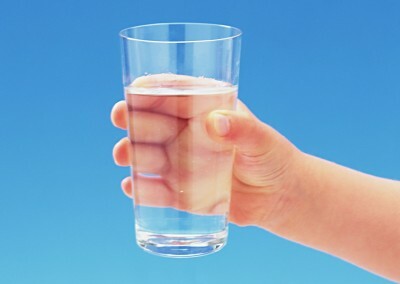
If an attack of pancreatitis develops, what medicines can be taken? To eliminate spasm, antispasmodics( Drotaverine, No-shpa) can be used. How to relieve an attack of pancreatitis at home? Under steady-state conditions, treatment may include infusion therapy( saline administration), diuretic therapy, omeprazole, analgesics and antiemetics, enzyme inhibitors( Contrikal, Gordoks).It is not always possible to remove an attack of pancreatitis at home, so it is necessary to consult a doctor.
Purulent inflammation of the gland is an indication for the prescription of antibiotics.
The most commonly used fluoroquinolones and cephalosporins. In the event that prolonged fasting is indicated, parenteral nutrition may be performed. In the case of chronic pancreatitis with enzymatic deficiency, enzyme preparations( Penzinorm) can be used. They are also shown in case of weight loss. What if you have destructive pancreatitis? With massive necrosis of the gland and the absence of the effect of conservative treatment, surgical intervention can be performed. The operation is performed when there are stones in the biliary tract, cysts and abscesses.
8 Compliance with the
diet If an attack of pancreatitis develops, what can be eaten by such a patient? Diet in acute pancreatitis is an important component of therapy. In an acute period, it is required to give up food for a while. Fasting is recommended for 3-4 days. After a few days the doctor appoints the patient a strict diet. Assign table number 5.The food should be gentle. As the situation improves, the list of allowed dishes expands.
It is required to exclude from the diet the following foods and dishes: dough products, fresh bread, pancakes, pies, rich soups, fatty meat and fish, spices, sauces, fat, margarine, tea, coffee, some kinds of juices( grape, apple,pomegranate).When swelling it is advisable to abandon legumes and cabbage. Be sure to exclude alcoholic beverages. You need to eat 5-6 times a day. In addition, you can consume vitamins.
9 Preventive measures
To prevent an attack, you must follow certain rules. First, you need to eat right. It is necessary to limit the consumption of fried and spicy dishes, spices, baked goods. It is important not to overeat. To leave from behind the table is necessary with the feeling of a small hunger, as the feeling of saturation comes only after 20-30 minutes. Secondly, you should lead a healthy and active lifestyle. It is necessary to abandon alcohol and tobacco products. Third, you need to move more. Stagnation of blood can also trigger pancreatitis. Fourth, chronic diseases( peptic ulcer, gastritis, cholecystitis) should be treated in a timely manner.
In case of an already developed attack, you should consult a gastroenterologist or therapist. In the absence of treatment, acute pancreatitis can become chronic. In this case, the probability of complications increases( pancreatic cancer, jaundice, necrosis, hepatitis, pleurisy).Thus, acute pancreatitis or chronic exacerbation requires treatment in a hospital setting. Do not self-medicate. When the first signs of the disease( abdominal pain) appear, it is required to consult a specialist and undergo a complete examination.
- 1 Type of the disease
- 2 Features of the
- 3 leakage Causes of the
- 4 Creation
- 5 Clinical picture
- 6 Diagnostic measures
- 7 Therapeutic tactic
- 8 Compliance with the diet
- 9 Preventative measures
If a person has an attack of pancreatitis, an emergency may be required. Pancreatitis mainly affects adults. This pathology is most often diagnosed in men. The disease affects the pancreas. The latter is the organ of the digestive system. The pancreas produces a number of enzymes that are in the pancreatic juice. This juice contributes to better digestion of food. What is the etiology, clinic and treatment of pancreatitis?
Do you have gastritis?
GALINA SAVINA: "How easy is it to cure gastritis at home for 1 month. A proven method is to write down a recipe. ..!"Read more & gt; & gt;

